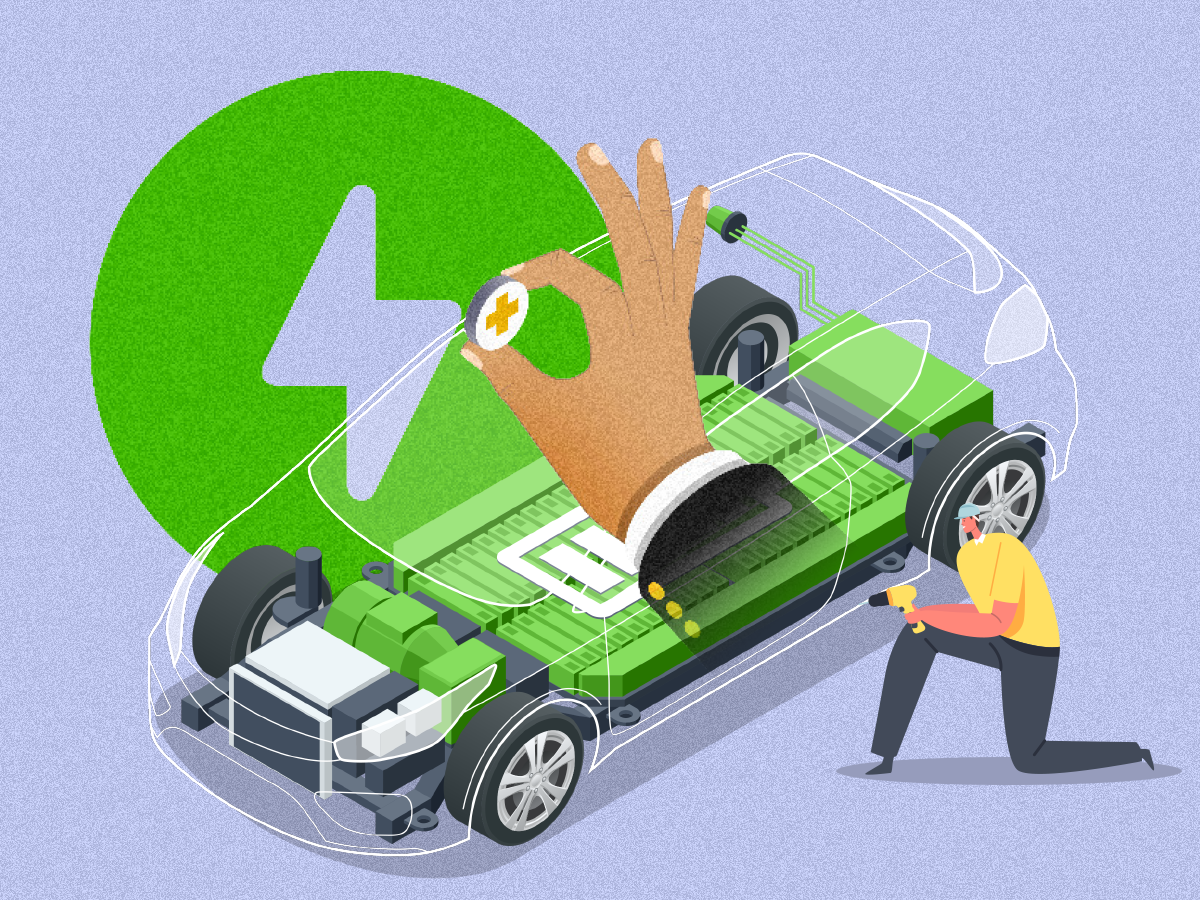
Informa Markets in India has launched the 17th Renewable Energy India (REI) Expo at the India Expo Centre, Greater Noida, alongside the 2nd edition of The Battery Show India. The event, taking place from October 3 to 5, 2024, aims to enhance collaboration and innovation across the renewable energy, battery storage, and electric vehicle industries.
The co-located REI Expo and The Battery Show India also feature several key highlights and sessions. These include the CEO and CTO Conclaves, the Bio Energy Pavilion supported by the Ministry of New and Renewable Energy, Government of India, and an Investor Zone in partnership with T-Hub (Government of Telangana), where sector entrepreneurs will pitch their business ideas to investors.
A significant event at the expo is the signing of a Memorandum of Understanding (MoU) between SolarfiX India and Kanemasa Japan. This collaboration aims to introduce an innovative SRA tracker technology for Agri-PV applications in India, which is projected to boost PV plant generation by 125% to 150%, thereby reducing the cost per unit of power. The Indian Biogas Association also expects to announce investments worth Rs 1600 crores in the biogas sector during the show.
Who all attended it?
Key dignitaries at the inauguration included Heera Lal Nagar, Minister of State, Energy Department, Government of Rajasthan; Manu Srivastava, Additional Chief Secretary, Power and Renewable Energy Department, Government of Madhya Pradesh; Shantanu Jaiswal, Head of India Research, Bloomberg NEF; Alex Whitworth, Vice President & Head of Asia Pacific Power & Renewables Research, Wood Mackenzie; Peter Hall, President, IMETA Region, Informa Markets; Yogesh Mudras, Managing Director, Informa Markets in India; and Rajneesh Khattar, Sr. Group Director, Energy portfolio, Informa Markets in India.
The “Advantage Rajasthan” session, led by Heera Lal Nagar, engaged attendees by showcasing Rajasthan’s initiatives and plans in the renewable energy sector.
Heera Lal Nagar spoke about Rajasthan’s significant contribution to India’s renewable energy targets set by the Prime Minister. “Rajasthan plays a pivotal role in driving India’s renewable energy ambitions, contributing significantly towards the nation’s 500 GW target, set by our Prime Minister. With its expansive desert areas now harnessed for solar and wind power, Rajasthan has transformed its geographic challenges into an energy boon. Currently, the state produces 20,000 MW of solar energy, using only 5,000 MW locally, while the rest is supplied across the country. Additionally, we have taken steps to further scale this, with planned investments of ₹5 lakh crores in the energy sector over the next 4-5 years.”
He elaborated on Rajasthan’s innovative energy projects which integrate solar, battery storage, and grid operations, positioning the state as a leader in energy production and distribution. “We are working on tenders for 1,000 MW of rooftop solar and strengthening our grid and transmission systems, ensuring sustainable growth for both Rajasthan and the nation.”
Manu Srivastava, Additional Chief Secretary, Power and Renewable Energy Department, Government of Madhya Pradesh, highlighted India’s progress in the renewable energy sector and the importance of cost competitiveness. “India’s renewable energy sector has made tremendous strides, with the Rewa, Madhya Pradesh project marking a key moment by reducing solar energy costs below coal without subsidies. Now, the focus is on proving that solar plus storage can outperform thermal power in cost-effectiveness.
Solar projects
Current tenders for both thermal and solar plus storage projects are testing this, with a large-scale 600 MW solar and 880 MWh battery project designed to provide a steady tariff across 24 hours. This model, supported by insights from Berkeley University, optimizes battery performance through two daily charge-discharge cycles—using solar energy for evening peaks and grid power to charge overnight for morning peaks.
Globally, electricity’s share in final energy demand is projected to rise from 20% to 31% by 2050, and in a net-zero scenario, it must exceed 50%. For India, developing both its fossil fuel and electric economies is critical to meet rising demand. Shifting agricultural power to daytime and offering discounts for daytime energy usage further optimize solar power deployment. With solar now a core part of India’s energy mix, integrating storage is essential for driving economic growth and ensuring energy sustainability.”
Alex Whitworth, Vice President & Head of Asia Pacific Power & Renewables Research, Wood Mackenzie, emphasized India’s growing importance in the global energy transition. “India’s role in the global energy transition is becoming increasingly prominent as its economy has overtaken the UK, surpassed France, and is on track to overtake major markets like Germany and Japan within the next five to ten years. With a GDP growth of 7% and power demand rising by over 8% this year, India is now the third-largest power market globally, and its energy demand is set to triple by 2050, making it a critical investment destination.
Renewable energy
Renewables are expanding rapidly, with over 200 GW of solar and wind capacity expected by 2030. India’s emergence as the second-largest solar module manufacturer, exporting to key global markets, highlights its potential. However, 70% of India’s power still comes from coal, with 50 GW of coal and 10 GW of nuclear expected by 2030. In a net-zero scenario, electrification would need to exceed 50%, a crucial focus for India as it balances its development of fossil fuel and electric economies in parallel to meet its growing energy demands. The country must address challenges in energy storage, grid infrastructure, and renewable deployment, while leveraging its domestic market and global partnerships to drive a low-carbon future.”
Shantanu Jaiswal, Head of India Research, Bloomberg New Energy Finance (NEF), underscored the urgency of the global energy transition due to rising global temperatures. “The year 2023 marked an unprecedented climate milestone, for the first time, global surface temperatures exceeded 2°C above pre-industrial levels for several days. What’s more concerning is that greenhouse gas emissions have not yet peaked, indicating that global temperatures will continue to rise for decades. In response to these challenges, there is a growing global focus on energy transition. India is at the forefront of this transition, with estimates from Bloomberg India suggesting that by 2030, the country will have more solar and wind projects than coal power plants.
Battery energy storage systems
The intermittency of renewable energy presents a significant challenge, making battery energy storage systems (BESS) essential for ensuring grid stability and enhancing renewable integration. Global energy demand is projected to triple, increasing from 1.8 terawatt hours to over 5 terawatt hours by 2050, primarily due to advancements in storage technology. Batteries play a crucial role not only in the power sector but also in transportation. India’s electric mobility sector is growing rapidly, with major automakers establishing battery assembly plants and leveraging the Production Linked Incentive (PLI) scheme to create 50 gigawatt hours of battery manufacturing capacity.
Demand for lithium-ion batteries is anticipated to rise from 10 gigawatt hours today to 200 gigawatt hours by 2035, fueled by the electric vehicle market and grid-scale storage needs. The synergy between Renewable Energy India and The Battery Show India serve as a catalyst for achieving interim energy transition goals and will accelerate the momentum towards a greener future.”
Yogesh Mudras, Managing Director, Informa Markets in India, highlighted India’s commitment to its COP26 goals and the importance of renewable energy in the country’s future. “The Renewable Energy India Expo 2024, alongside The Battery Show India, highlights the nation’s progressive alignment with its COP26 commitments, reflecting India’s dedication to reducing carbon emissions and increasing renewable energy. With a goal to reduce carbon intensity by 45% by 2030, the expo highlighted the critical role of renewables. Key advancements include the approval of 50 solar parks with a total capacity of 37.49 GW, alongside ambitious targets of producing 5 million tons of green hydrogen and achieving a 30 GW offshore wind energy capacity by 2030.
Battery Show India
The Battery Show India spotlighted the country’s growing battery storage market, which is set to expand by 47 GW by 2031-32. India’s strides in domestic lithium-ion battery production were particularly noteworthy, with production capacity expected to reach 150 gigawatt hours by 2030, covering 13% of total cell demand. These developments, showcased at the events, demonstrate the shows’ influence and India’s commitment to a sustainable and resilient energy ecosystem.”
Venugopal Shanbhag, Executive Director – Grindwell Norton Ltd, discussed technological advancements in battery solutions. “With our advanced battery pack solutions, we are geared towards addressing the fundamental challenges of cell swelling, thermal management, IP67 sealing, and thermal runaway for longevity, safety, and efficiency. Our vision-driven approach fuels our R&D investments, focused on sustainable manufacturing and extended battery life for a resilient future.”

